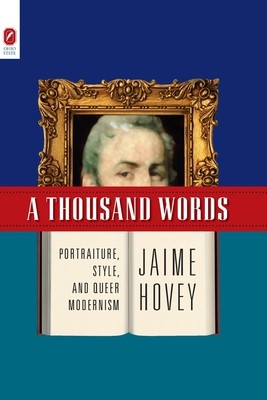
- We will send in 10–14 business days.
- Author: Jaime Hovey
- Publisher: Ohio State University Press
- ISBN-10: 0814256457
- ISBN-13: 9780814256459
- Format: 15.2 x 22.9 x 0.9 cm, softcover
- Language: English
- SAVE -10% with code: EXTRA
Reviews
Description
A Thousand Words argues that there is such a thing as queer modernism, and that the (mostly) literary portrait-one of the more prominent forms of experimentalism in late-nineteenth- and early-twentieth-century writing-functions as one of its most important erotically dynamic aesthetic mechanisms, one modeled on visual portraiture's relationships of looking between the artists, sitters, and spectators of paintings. Jaime Hovey looks at how the dynamic structure of visual portraiture was appropriated by modernist writers-including Oscar Wilde, Gertrude Stein, T. S. Eliot, Virginia Woolf, Ernest Hemingway, and Colette, among others, who used the self-conscious literary portrait. Portraiture speaks to the complex relationship between identity, sexuality, and art, and the presence of so many portraits in this era suggests that sexual, gender, and racial aspects of character, personality, and personal identity were of major concern to most modernist writers. Yet it took most of the twentieth century for critical work to appear that meaningfully explored these themes, and very little has been said about the queerness of literary portraiture. This book demonstrates that literary portraiture is enamored of its own self-consciousness, with the pleasures of looking at itself seeing itself, and that its texts circulate this pleasure between writers, narrators and other characters, and readers as a perverse aestheticsEXTRA 10 % discount with code: EXTRA
The promotion ends in 16d.17:45:57
The discount code is valid when purchasing from 10 €. Discounts do not stack.
- Author: Jaime Hovey
- Publisher: Ohio State University Press
- ISBN-10: 0814256457
- ISBN-13: 9780814256459
- Format: 15.2 x 22.9 x 0.9 cm, softcover
- Language: English English


Reviews